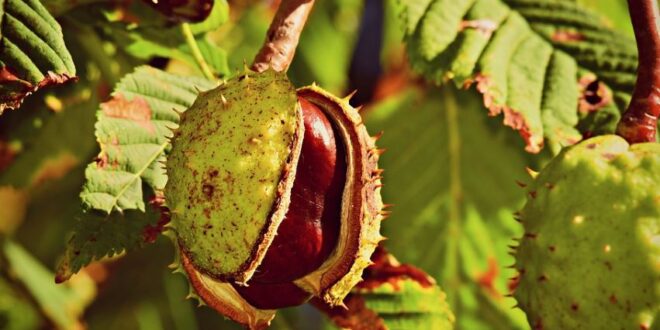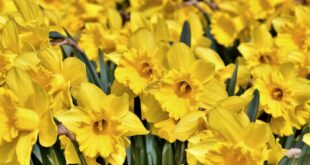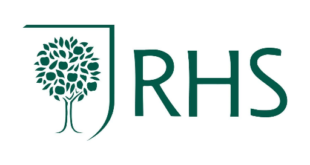Trees are extremely important, and essential for living beings to thrive. They are the largest plant on the planet, and they do a lot for us. They produce oxygen, which we all need to survive, and they also function as a physical filter, absorbing pollutants from the air and trapping dust. As well as this, they store carbon, give life to the world’s wildlife, stabilise the soil, and give us the tools and materials we need to create shelter.
Thanks to this, it’s crucial that we protect trees. We need to ensure that, where possible, we prevent the destruction of rainforests and woodlands, and we need to plant new trees to replace the ones lost.
While this may be true, many people are put off planting new trees as they find it hard to know what trees are best to grow and which ones are best to avoid. Another huge question people worry about is whether they should choose a tree native to the UK or a non-native tree.
The debate over native versus non-native trees and which are better to plant in the UK has been going on for many years and is unlikely to be solved soon. While some people believe we should be planting native trees to preserve our history and heritage, others think that we need to start planning for the future, and the best way to do this is by planting a variety of trees, including non-native trees.
The good news is, whichever type of tree you choose to plant, you will be doing something amazing. Not only will it help the environment, but it will also help human beings too. If you like the idea of planting a tree and you want to find out more about non-native varieties, then check out the list of non-native trees below:
1. The Cherry Sour Tree
Many people find it hard to identify trees, particularly non-native varieties. While you may not think that you will ever need to identify a tree, this may not be true. For example, you may have to learn about the trees in your garden if you want to apply for planning permission. The good news is that there are professionals who can help you do this. Tree surveyors such as the ones at treesurvey.co.uk will not only help you to identify what type of tree you have, but they can also help with other things, including helping you gain planning permission or helping you meet the criteria of your mortgage lender.
One tree that you may need help identifying is the cherry sour tree. While this tree may look like other trees grown in the UK, it can be identified by its acidic fruits, which birds love to eat. Not only that, but this tree is covered in beautiful blossoms in the spring months.
2. Apple Trees
Although you may not realise it, the apple tree is non-native to the UK. This tree’s tangy, tart, and crisp fruit is so popular with people in the UK that the non-native tree variety has become one of the most planted trees here. While they may not be native, they have grown in the UK for centuries, not only as eaters, but also for cooking too.
3. The Plum Cherry Tree
The plum cherry tree is the ancestor of the domestic plum tree. This tree is one of the first trees to flower in early spring. One of the best features of the plum cherry tree is its stunning blossom.
4. The Beech Copper Tree
The beech copper tree is one of this list’s most easily identifiable trees. It has distinctive deep purple leaves that many people in the UK love. Landscape gardeners often use this tree as a specimen tree.
5. The Field Elm Tree
For many years, the Field Elm Tree was under threat. Many trees in the UK and around the world died due to a disease known as the Dutch elm disease. Thankfully, the field elm tree was able to recover. This was mainly because this type of tree can grow easily. Many species of wildlife rely on this type of tree to survive.
6. The Sweet Chestnut Tree
Who does not love the taste of a sweet chestnut at Christmas time? In fact, roasting chestnuts has become a Christmas tradition for many people in the UK. However, did you know that the sweet chestnut tree is non-native to the UK?
This tree was first introduced into the UK hundreds of years ago by the Romans. These trees have deep grooved, prickly bark and are giant in size.
7. The Horse Chestnut Tree
Another hugely popular tradition enjoyed by thousands of children and adults in the UK in autumn is playing conkers. Conkers come from the horse chestnut tree. This type of tree is known for producing shiny conkers that are mahogany in colour and are surrounded by spiky cases. This tree is the very essence of autumn.
8. The Leyland Cypress
The Leyland cypress is well known as a tree that causes neighbour disputes. This is because it can grow to ridiculous heights in a brief period of time. In fact, it is one of the quickest growing trees in the world.
9. The Huntingdon Elm
Unlike the field elm tree, this type of elm tree has some resistance to the horrible Dutch elm disease. It is a hardy type of tree that has become popular in the UK.
10. The Cedar Tree
Another popular non-native variety of tree that we see a lot in the UK is the cedar tree. This tree is gigantic in size and smells divine. It is believed to be one of the most majestic non-native trees ever planted in the UK.
No matter what type of tree you choose to plant, whether native to the UK or a non-native variety, you will be doing something brilliant. Remember, there is no right or wrong answer when choosing a tree to plant. Keeping an open mind is essential. The planet is constantly changing, and we need to learn to change and adapt with it.
 Gardeners Club The Gardeners Club is a free to join online club for everyone with an interest in gardening and gardens.
Gardeners Club The Gardeners Club is a free to join online club for everyone with an interest in gardening and gardens.






